IGOROTS OF THE CORDILLERAS
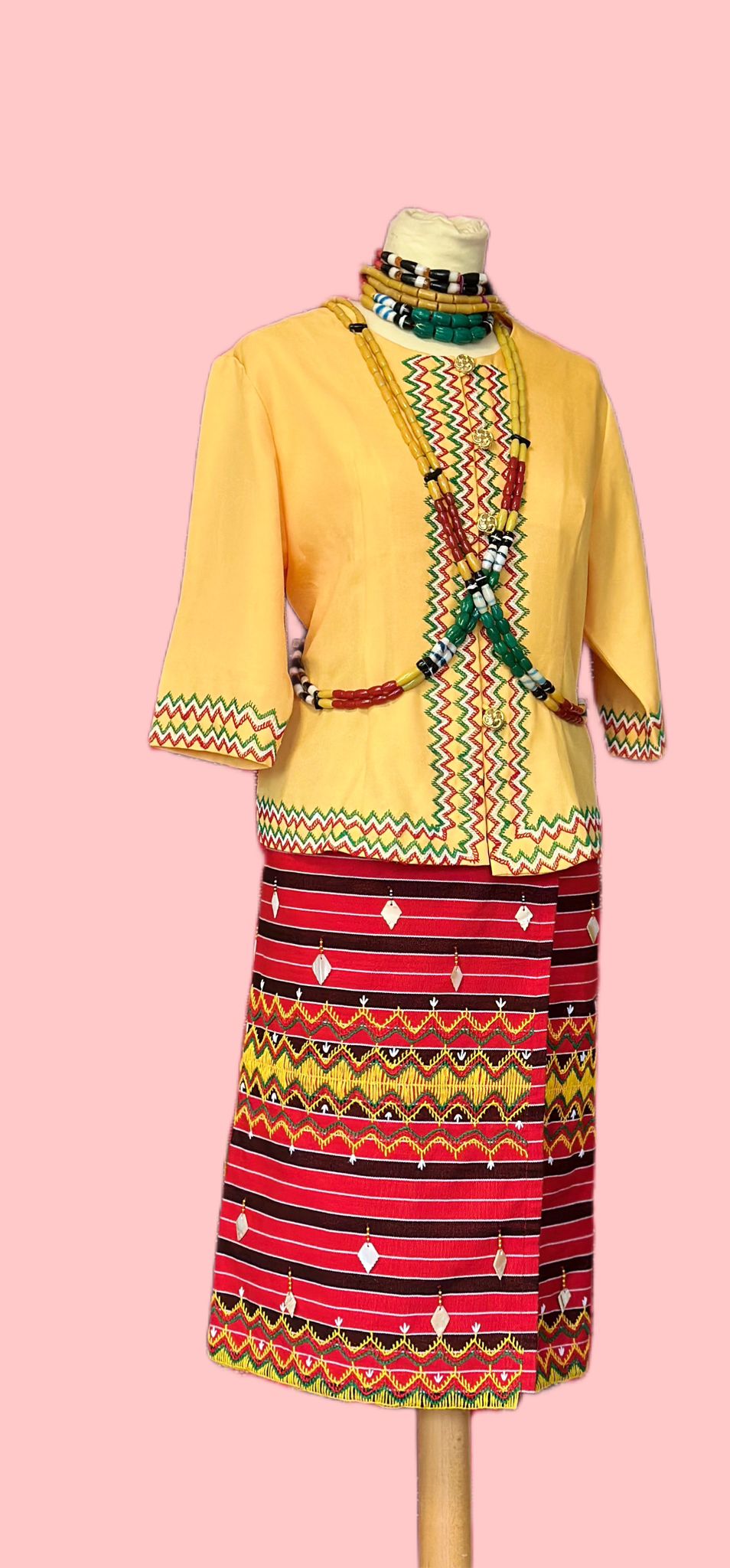
KALINGA,
Peacocks of the North
The „Ka-in“ or wraparound skirt is an intricately handwoven garment withth nature-inspired geometric patterns, embellished with embroidery, beads and mother-of-pearl shells.The traditional color combinations are stripes of red symbolizing bravery, black representing the earth and yellow symbolizing wealth and fertility.
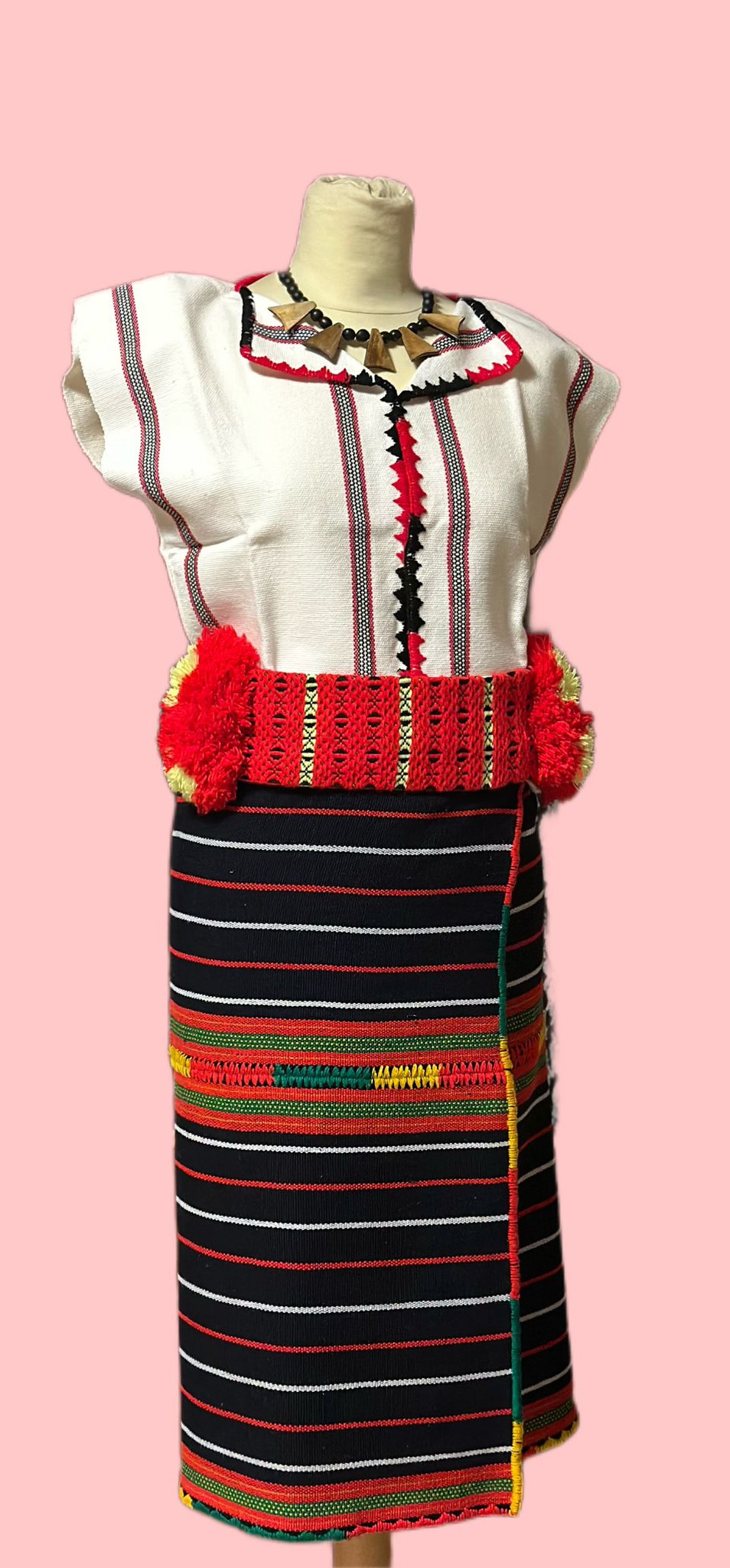
IFUGAO,
Builders of the Spectacular Banaue Rice Terraces
Fabrics are hand-woven on looms using age-old techniques passed on from generation to generation. Their garments are known for its vivid colors, striking designs and characterized by red and white stripes of woven threads.
THE ELEGANT FILIPINIANA
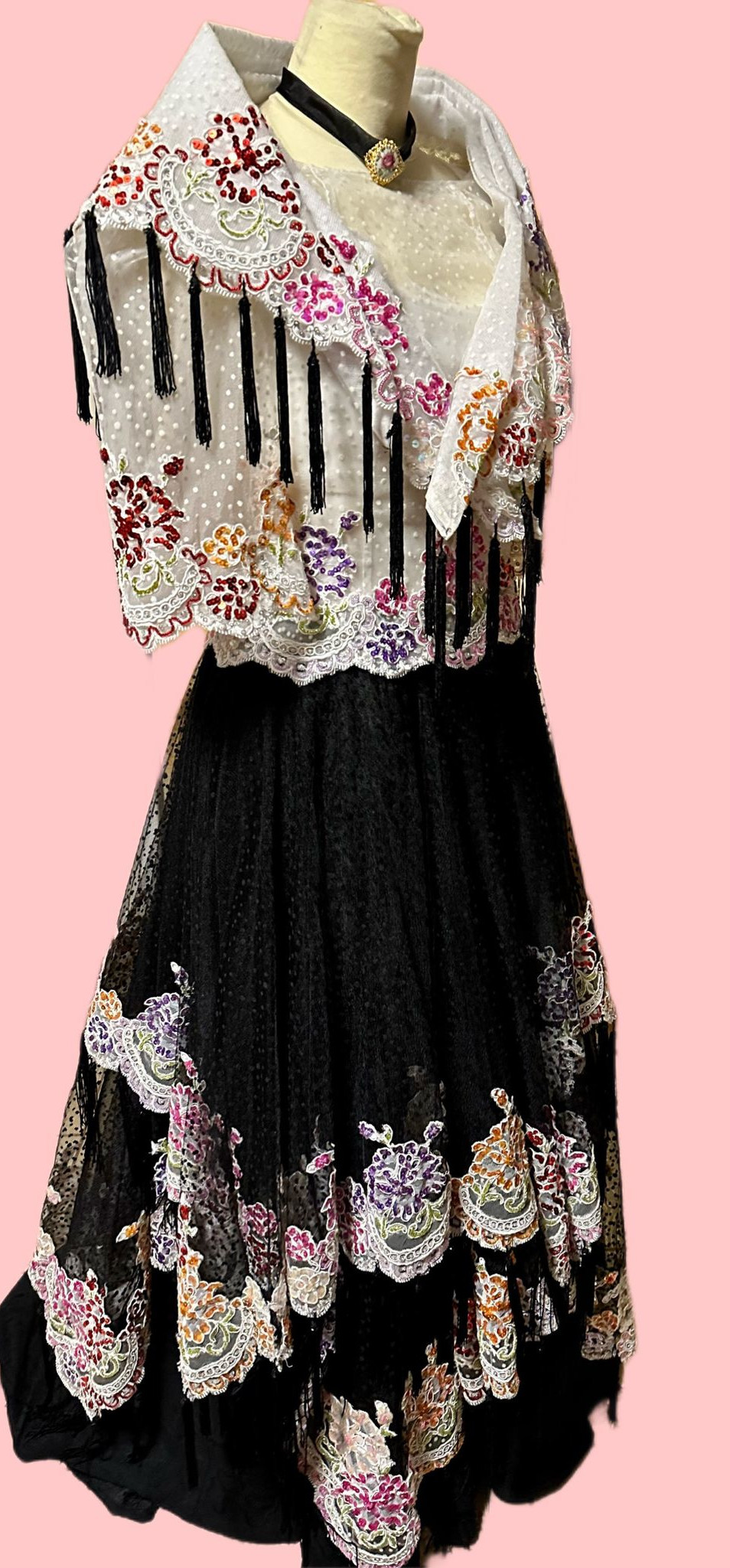
TRAJE DE MESTIZA
The „Traje de Mestiza“ or more commonly known as the „Maria Clara“, Jose Rizal’s heroine in his novel „Noli me Tangere“, has played an important role in the heritage of the Philippines. It is a more elegant version of the „Baro’t Saya“ and have four basic parts: a camisa (blouse) with oversized bell-shaped sleeves, a panuelo (kerchief) and a saya (skirt) that flares out at the hem and a tapis (over skirt). Today, the elegant Maria Clara is still donned by women during formal gatherings and festivities.
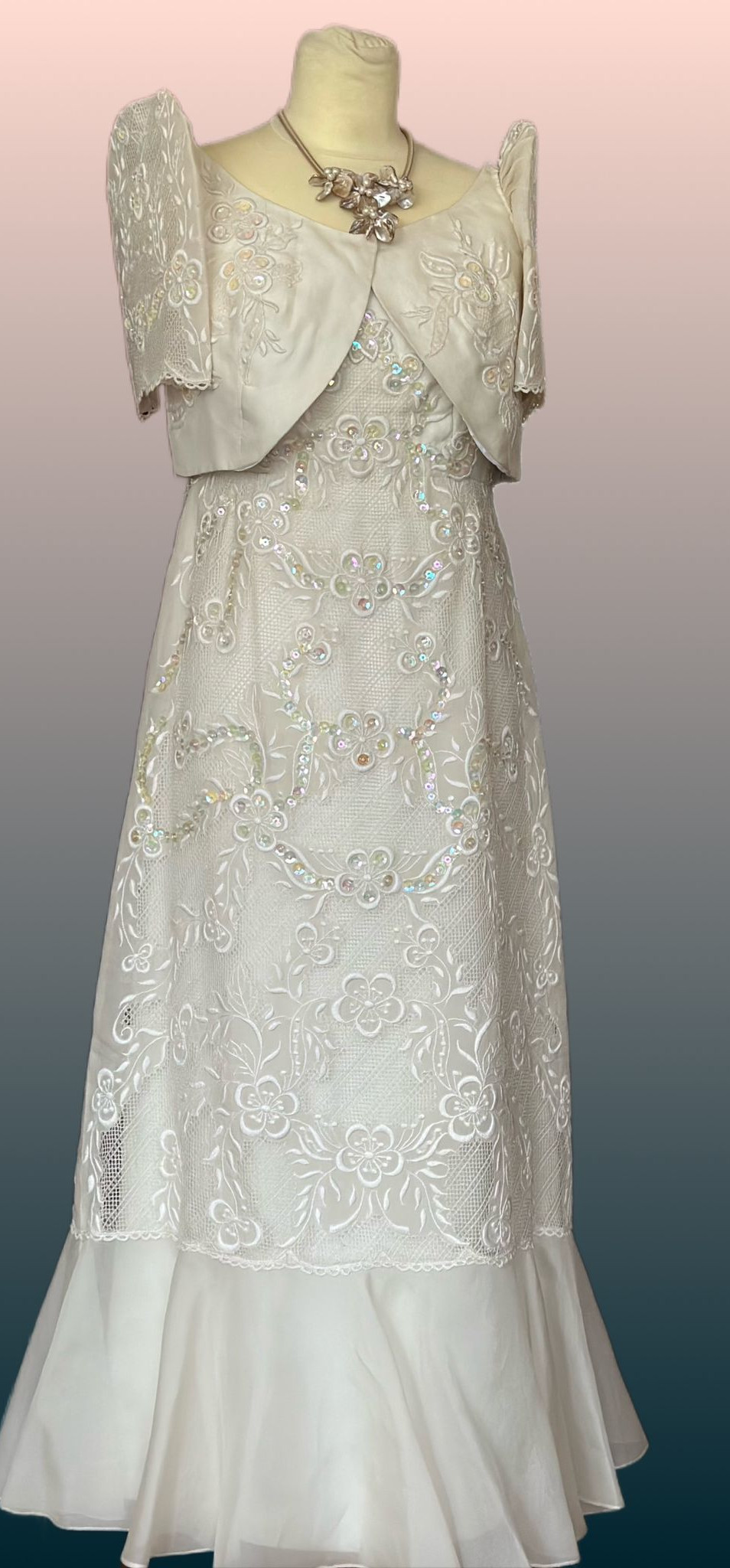
TERNO
From the „Traje de Mestiza“, the fashion style dramatically evolved through the years into the „Terno“. By the mid-20th century, the 4 components of the „Traje de Mestiza“ were elegantly combined into one piece called the „Terno“. It now comes in various colors and designs, but it’s main characteristic is the flattened sleeves, also termed as „butterfly sleeves“ that makes it uniquely distinct. This Jusi Barong Terno on display is made of fine pineapple fabric and meticulously hand-embroidered by local artisans from Taal, Batangas
LEGENDS OF THE SOUTH
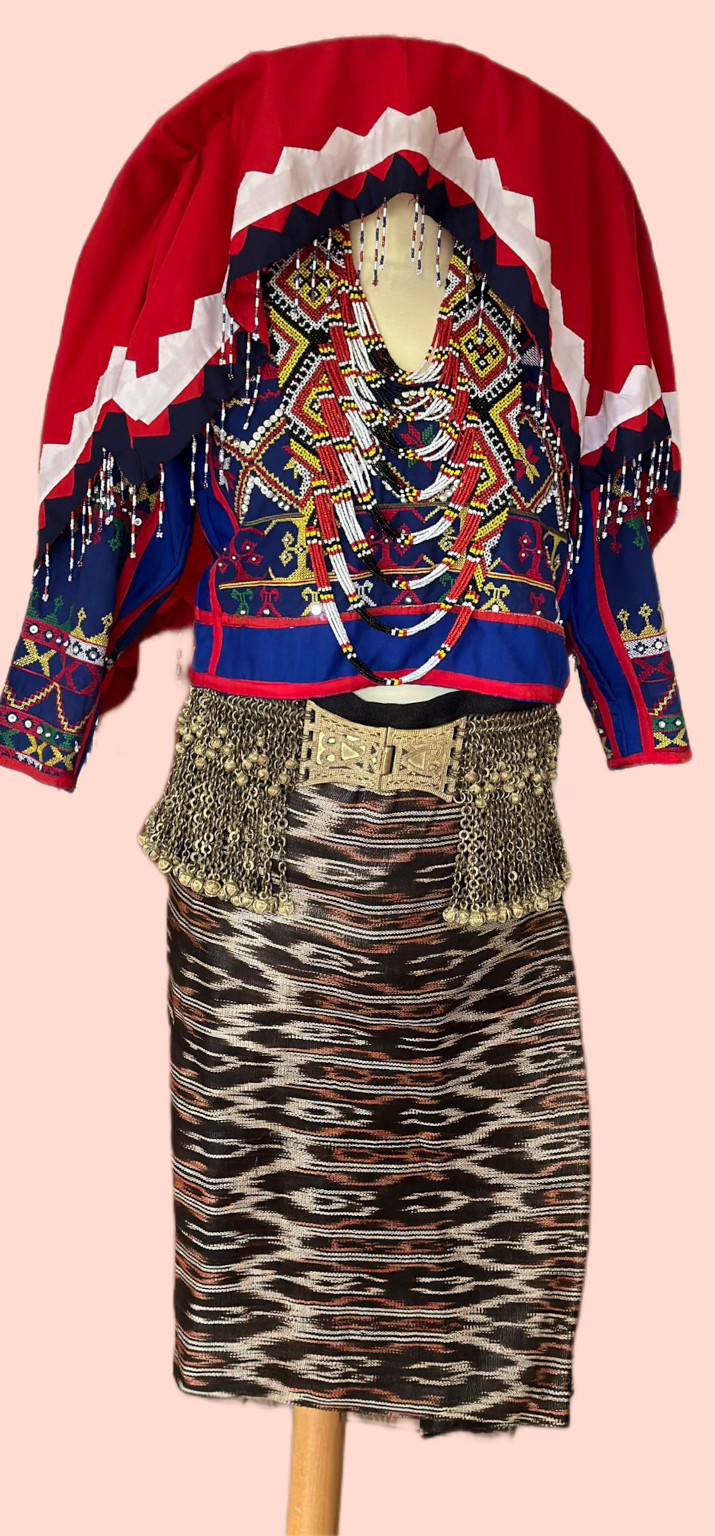
TBOLI,
Dreamweavers of South Cotabato
The „Tboli“ are a Lumad (non-Muslim, non-Christian) indigenous group living in Mindanao and known for their „t’nalak“ abaca weaves.Their attire is comprised of a tight-fitting blouse with colorful cross-stitched geometrical designs, adorned with mother of pearl beads or appliques. It is paired with a t’nalak tubular skirt for special occasions or plain-woven cotton fabric for ordinary days. Tboli women adorn themselves with beautiful accessories for various occasions. They use a „s’laong kenibang“, a wide-brimmed bamboo hat lined with a patch-worked red cloth for farming or traveling as a protection from the sun
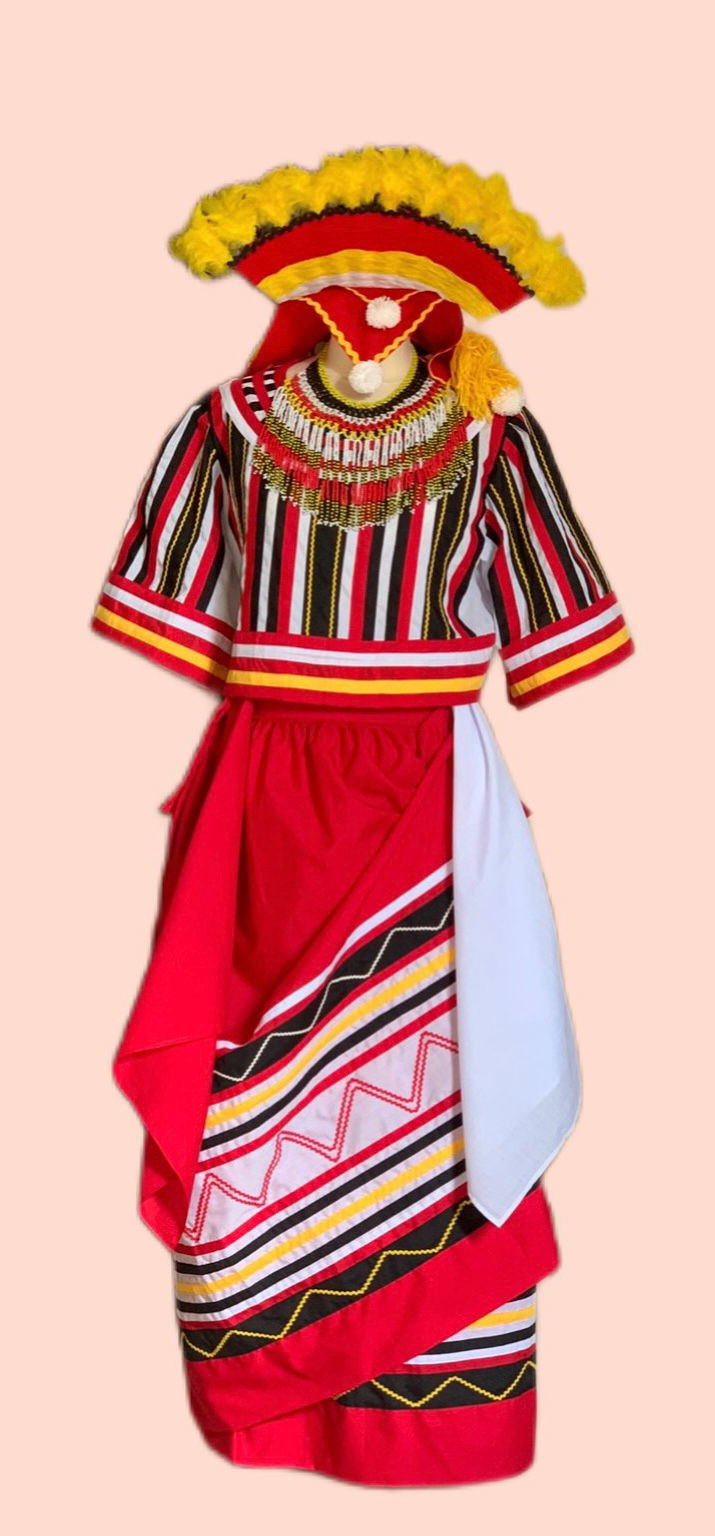
HIGAONON,
Weavers of Peace
The Higaonons, one of the seven tribes inhabiting Bukidnon, Lanao del Norte and Misamis Oriental, are described as „mountain dwellers“. The dominant colors in their garments are red for bravery; white for purity and sincerity to their beliefs & traditions; black for loyalty to their customary laws. The „Panika“ headdress of the Higaonon women symbolises a sacred responsibility to champion their cultural heritage
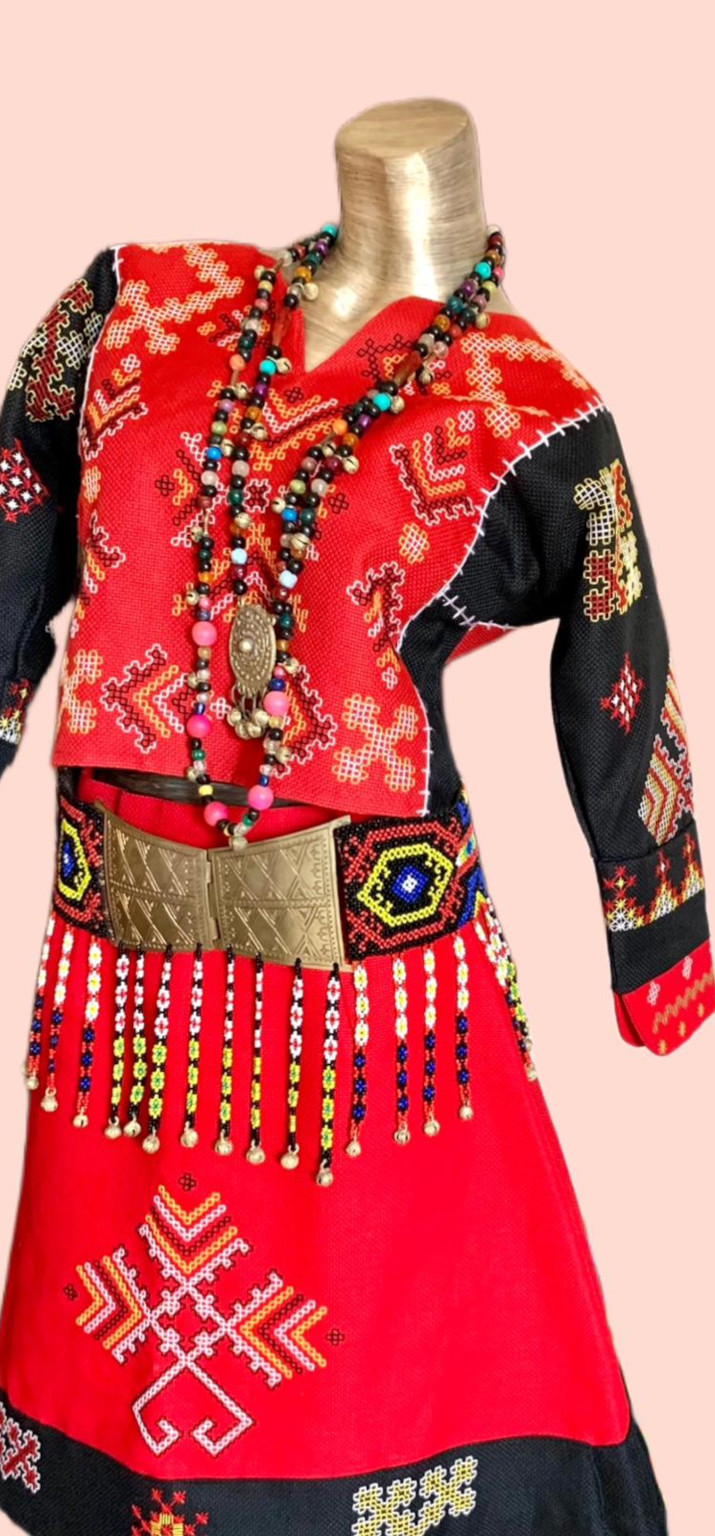
AGUSAN MANOBO,
Masters of the ancient art of Suyam
The Agusan Manobo is one of the eight Manobo clusters in Mindanao whose origins can be traced back to the early Malay people from surrounding islands of Southeast Asia and who share a common cultural language and Malay heritage. They are intimately connected with the natural elements which find expression in their traditional embroidery called „Suyam“, the art of geometric block stitching that has adorned the traditional and ceremonial garments of the Manobos. „Suyam“ embroidery is grounded on ancient rituals and beliefs that depict the community and natural elements, and passed on from generation to generation. It is a vanishing art of embroidery which need to be cultivated and preserved
Art Exhibition
LOCATION
ATRIUM
Exhibitor
Ana Maria Cruz Langer
